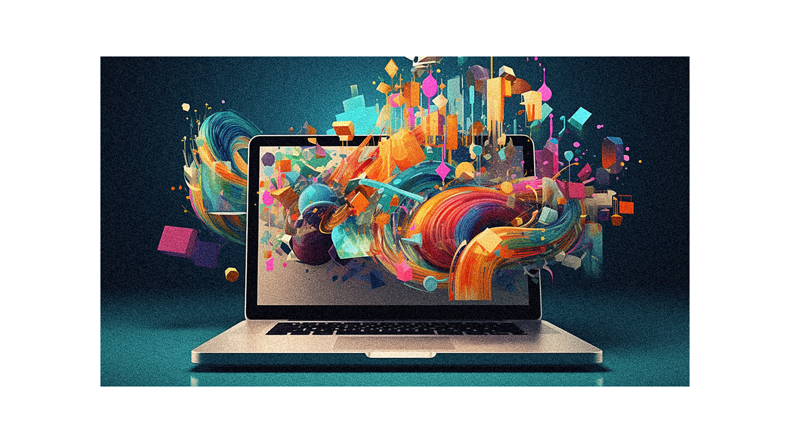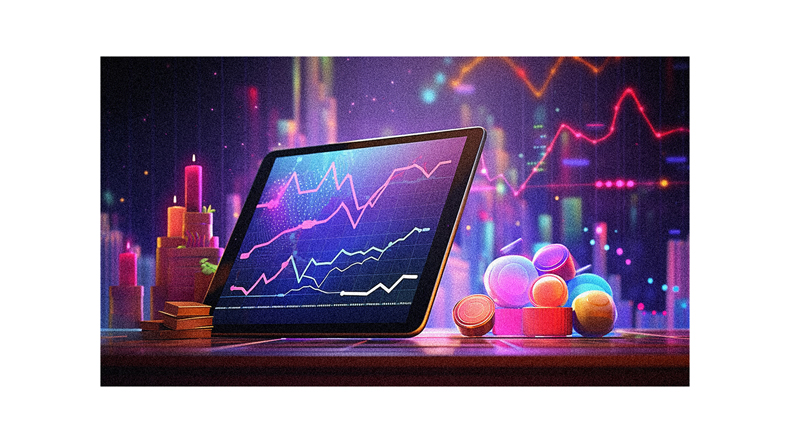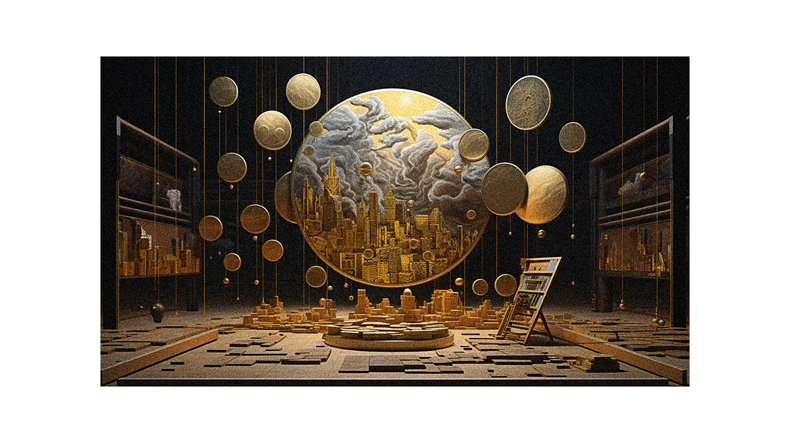You’re on the brink of a digital art revolution, and it’s time to cash in. In this article, you’ll plunge into the world of NFTs, explore the impact of AI on art, and grasp fractionalization.
We’ll navigate the best platforms for trading digital art and guide you on how to make your creativity pay. Welcome to the future of art monetization, where your artistic talent meets technology.
Let’s embark on this thrilling journey together!
The Rise of NFT Marketplaces for Digital Artists
You’re witnessing a groundbreaking moment in the digital art world with the rise of NFT marketplaces enabling artists to monetize their creations like never before. These platforms provide a unique space where artists can sell their digital assets directly to collectors.
It’s a game-changer, giving artists full control over their work and a fair share of the profits. Moreover, with the advent of AI in the mix, artists have an innovative tool to create and mint their art as NFTs. It’s not just about selling digital art; it’s about embracing technology and pushing the boundaries of creativity.
But remember, it’s a dynamic market. So, always be mindful of the challenges and considerations, such as copyright issues and energy consumption. With due diligence, you can thrive in this vibrant new landscape.
Exploring Different Platforms for Selling Digital Art

When selling your creative works online, you can explore a whole array of sites. Etsy is a marketplace where artists can sell unique, handmade goods.
Then there’s Redbubble, which allows you to sell your designs on various products like t-shirts or phone cases.
If you’re into digital art, you might want to try DeviantArt, a community specifically for artists and art enthusiasts.
If you want to sell NFTs, OpenSea could be your best bet. It’s a decentralized marketplace where you can create, buy, and sell digital assets.
Strategies for Pricing and Valuing Digital Artworks
Determining the right price for your creative works can be tricky, but it’s crucial in the world of NFTs and online art marketplaces. You’ve got to consider several factors:
- your time investment,
- the cost of production, and
- the perceived value of your artwork.
Don’t undersell your work; remember, it’s unique and valuable. Research is key! Look at similar works, see how they’re priced, and use that as a baseline.
It’s also important to remain flexible. The digital art market fluctuates, so be prepared to adapt your pricing strategy. Lastly, don’t forget to factor in the transaction fees on your platform.
Pricing your art right is an art itself, and with practice, you’ll master it.
Leveraging Social Media Platforms for Art Promotion and Sales
Leveraging social media for your art promotion and sales can significantly boost your visibility and, in turn, your profits. Platforms like Instagram, Facebook, and Twitter aren’t just for socializing; they’re powerful marketing tools.
You can show off your digital art, engage with potential buyers, and build a loyal following. Remember, it’s not just about posting; it’s about engaging. Respond to comments and messages, follow relevant accounts, and don’t be shy about sharing a bit about yourself. People are more likely to buy from artists they feel connected to.
Use hashtags strategically to reach wider audiences. Consider collaborations with other artists or influencers to expand your reach. It’s a digital world, and you’ve got to make the most of it for your art’s success.
Collaborating With Brands and Influencers in the Digital Art Space
You’ll find that teaming up with influencers and brands in the creative space can significantly amplify your reach and exposure. These collaborations boost your visibility and lend credibility to your work. They’re a great way to connect with a broader audience and build a strong digital presence.
Don’t hesitate to reach out to influencers who resonate with your art style. You’ll be surprised how often they’re willing to showcase your work. Similarly, partnering with brands can open up opportunities for sponsorships and commissions. Remember, it’s all about networking and leveraging the right partnerships.
In the digital art world, who you know can be as important as what you create. So start collaborating and watch your digital art career soar.
Maximizing Revenue Through Limited Edition Releases and Auctions
Now, let’s delve into maximizing revenue through limited-edition releases and auctions.
You’re an artist, and you’ve got your unique digital creations. It’s time to monetize them smartly.
Limited-edition releases can create a sense of exclusivity, making your art highly sought after. Think about it: scarcity promotes demand, and demand can lead to higher prices.
On the other hand, auctions can get the bidding wars going. Setting a starting price and letting potential buyers compete can often result in impressive profits.
You’ve got to remember that art isn’t just about creation; it’s also about strategic selling. Blending limited editions and auctioning could be your golden ticket to maximizing revenues.
Monetizing Digital Art Through Licensing and Merchandising
Diving into the world of licensing and merchandising, you have another potent way to cash in on your creative work. When you license your digital art, you’re essentially renting it out to others. This could be for album covers, t-shirts, or video game graphics. But remember, you still retain the rights to your work.
Merchandising, on the other hand, involves creating physical products featuring your digital art. Think posters, clothing, or even coffee mugs. It’s a great way to give your fans something tangible to connect with your art.
The Role of Virtual Reality and Augmented Reality in Art Sales
Now, let’s delve into the role of Virtual Reality (VR) and Augmented Reality (AR) in art sales. Imagine walking through a virtual gallery, examining art pieces from all angles, or interacting with them. That’s precisely what VR and AR offer. They’re revolutionizing how you experience and purchase art.
You aren’t confined to static images on a screen; you’re immersed in a dynamic, interactive world. AR lets you visualize how art pieces fit into your space, making buying decisions easier. VR enables you to tour galleries from the comfort of your home.
These technologies aren’t just changing how you buy art; they’re making art more accessible. Don’t just observe the transformation; be part of it. Embrace VR and AR in your art-buying journey.
Building a Strong Online Presence as a Digital Artist
In today’s tech-driven world, you need to establish a solid online presence as an artist, which can significantly boost your visibility and sales.
Start by creating a professional website showcasing your work. It’s your digital portfolio, so make it visually appealing.
Use social media platforms to reach a wider audience. They’re not just for selfies, you know. Instagram, for instance, is a visual medium perfect for artists.
Engage with your followers, respond to their comments, and thank them for their support. You’re not just selling art; you’re building a community.
Consider starting a blog or a vlog to share your creative process. It’s a way to connect with your audience on a deeper level.
Diversifying Income Streams in the Digital Art Market
You have plenty of opportunities to diversify your income streams in the current market without relying solely on selling your creations.
Try licensing your digital art or selling prints.
You could also teach online art classes or create video tutorials.
Consider selling merchandise featuring your designs or launching a Patreon account.
With blockchain technology, you can even mint your digital art into NFTs. They’re unique, blockchain-based assets that can fetch a high price on the right platform.
Don’t forget about AI, either. With AI, you can generate unique art that could become valuable digital collectibles.
Remember, the key is to diversify and not put all your eggs in one basket.
Now, let’s steer into a critical aspect of the digital art world: navigating copyright and intellectual property rights.
In this rapidly evolving landscape, you’re an artist and a rights holder. It’s crucial to understand that your creative prowess isn’t just about making visually appealing works; it’s also about owning and protecting your intellectual property.
Challenges may arise, especially with the advent of NFTs and AI-generated art. There’s a fine line between inspiration and infringement. You’ve got to ensure you’re not crossing it. You also need to defend your work from potential misuse.
Engage with legal professionals, educate yourself, and use technology effectively. Remember, it’s not just about creating; it’s about securing your creations too.
The Future of Monetizing Digital Art: Trends and Predictions

Emerging trends and predictions are set to reshape how you profit from your creative endeavors in the virtual realm. NFTs and AI are revolutionizing the digital art market, providing you with new opportunities to monetize your work.
However, as you dive into this innovative space, you’ll need to navigate challenges like energy consumption in blockchain technologies and copyright issues in the crypto art market.
Artificial intelligence is powering the creation of unique art pieces that can be minted as NFTs, offering you a world of possibilities. Yet, you must also consider the ethical implications and strive to balance innovation with sustainability.
The future is ripe with potential, but it’s up to you to harness it responsibly.
Follow us on Pinterest for more tips, tutorials, and reviews for creatives!





